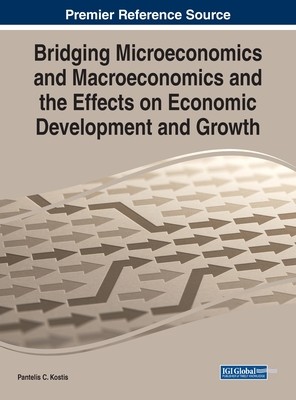
- We will send in 10–14 business days.
- Publisher: Business Science Reference
- Year: 2020
- Pages: 368
- ISBN-10: 1799849333
- ISBN-13: 9781799849339
- Format: 21.6 x 27.9 x 2.1 cm, hardcover
- Language: English
- SAVE -10% with code: EXTRA
Bridging Microeconomics and Macroeconomics and the Effects on Economic Development and Growth (e-book) (used book) | bookbook.eu
Reviews
Description
In recent decades, the mainstream microeconomic and macroeconomic analysis was proven to be insufficient for exploring the dynamic and complex interactions among humans, institutions, and nature in our real economy. On the one side, microeconomics is filled with black-box models that fail to study the actual contractual relations between firms and markets, while on the other side macroeconomics were proven useless because they mistook the beauty of theoretical models for truth. Thus, questions have arisen about using new theoretical and empirical structures that would better describe our economic systems. Bridging Microeconomics and Macroeconomics and the Effects on Economic Development and Growth is an essential reference source that analyzes the hypotheses that govern the relationships of aggregate structures (macroeconomic analysis) that may be compatible with the assumptions that govern the behavior of individuals, households, and firms (micro analysis), and vice versa, in trying to achieve sustainable economic development and growth. Moreover, modern evolutionary growth thinking is used in trying to bridge the inconsistencies between microeconomics and macroeconomics and confront their failures in order to better describe the economic reality. While highlighting a broad range of topics including globalization, economic systems, and the role of institutions, this book is aimed toward economic analysts, financial advisors, policymakers, researchers, academicians, and students.
EXTRA 10 % discount with code: EXTRA
The promotion ends in 19d.21:56:37
The discount code is valid when purchasing from 10 €. Discounts do not stack.
- Publisher: Business Science Reference
- Year: 2020
- Pages: 368
- ISBN-10: 1799849333
- ISBN-13: 9781799849339
- Format: 21.6 x 27.9 x 2.1 cm, hardcover
- Language: English English
In recent decades, the mainstream microeconomic and macroeconomic analysis was proven to be insufficient for exploring the dynamic and complex interactions among humans, institutions, and nature in our real economy. On the one side, microeconomics is filled with black-box models that fail to study the actual contractual relations between firms and markets, while on the other side macroeconomics were proven useless because they mistook the beauty of theoretical models for truth. Thus, questions have arisen about using new theoretical and empirical structures that would better describe our economic systems. Bridging Microeconomics and Macroeconomics and the Effects on Economic Development and Growth is an essential reference source that analyzes the hypotheses that govern the relationships of aggregate structures (macroeconomic analysis) that may be compatible with the assumptions that govern the behavior of individuals, households, and firms (micro analysis), and vice versa, in trying to achieve sustainable economic development and growth. Moreover, modern evolutionary growth thinking is used in trying to bridge the inconsistencies between microeconomics and macroeconomics and confront their failures in order to better describe the economic reality. While highlighting a broad range of topics including globalization, economic systems, and the role of institutions, this book is aimed toward economic analysts, financial advisors, policymakers, researchers, academicians, and students.


Reviews